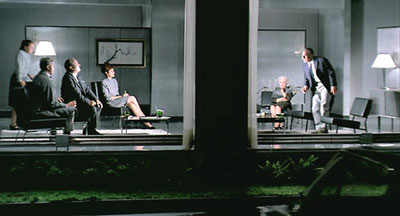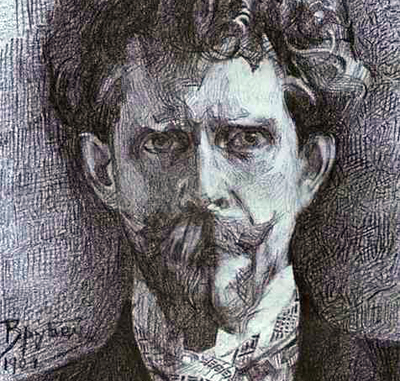Jacques Tati’s “Play Time”

Look about you and you’ll see there’s always something funny happening. – Jacques Tati
Imagine a Paris of the future, as envisioned by someone in the 60s. The city landscape is a series of towering glass and concrete constructions, filled with uninviting black, vinyl modernist furniture and efficient businessmen wearing indistinguishable dark suits. The only glimpse of the remaining romantic image of Paris is a ghostly reflection of the Eiffel Tower in the polished glass door of a high-rise building. Offices are operated by incomprehensible switchboard systems that would have made HAL bewildered; trade shows supply visitors with identical looking furnishings and pointless implements of efficiency, like doors that can be slammed without making a sound, or trash cans shaped like Grecian columns; and every apartment, airport, building lobby and street corner looks exactly the same.
Sounds devastating, I know.

Somehow, director Jacques Tati managed to fill this drab, colorless world with an assortment of characters and plot turns, creating one the most lighthearted and whimsical spectacles I’ve seen in a long while.
In 1967, Tati wrapped up three years of filming (including 9 months of editing) of Play Time, his third film featuring an endearingly bumbling character named Monsieur Hulot, played by the director himself. The movie was a grand undertaking shot entirely in 70mm, with elaborately constructed sets and a stereophonic soundtrack that was quite advanced for the time. It was also a tremendous financial flop that sent Tati into bankruptcy.
The best way to go into the film is without expectations, only to come out smiling. The title is appropriate – the movie is a farce, but such a sweet and kind-hearted one, playful yet extremely stylized. Any plot description, long or short, won’t convey the effects of the meticulous character choreography, the clever visual humor, or the deliciously crisp audio track. However, Play Time’s basic synopsis is such: through a series of coincidental interactions, two bewildered characters (Hulot, with his too-short pants and smoking pipe, and a young American woman traveling with a guided tour group) barely cross paths, while trying to navigate the confusing maze of downtown Paris. The two finally meet at a new restaurant – so new, in fact, that the construction workers are still building parts while the hosts welcome their first diners to the grand opening. Everything that could go wrong, does, and the result is a chaotic, tremendous, swinging party that would have made Peter Sellers well up with pride.














